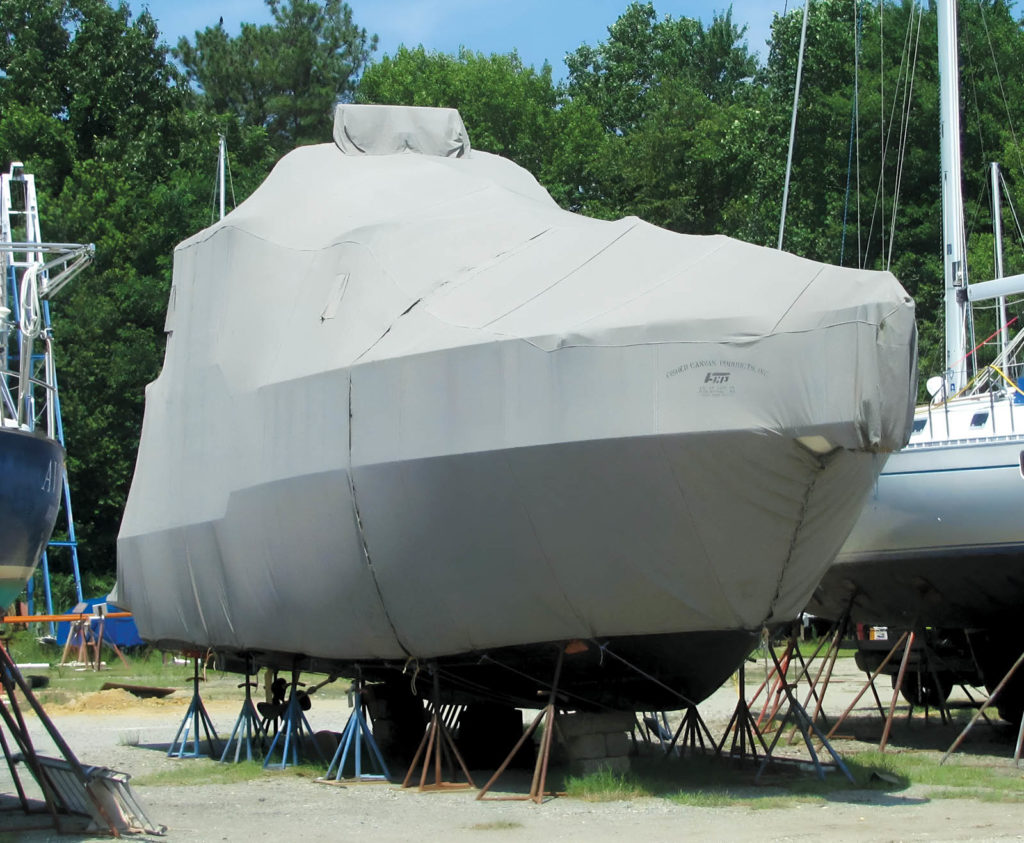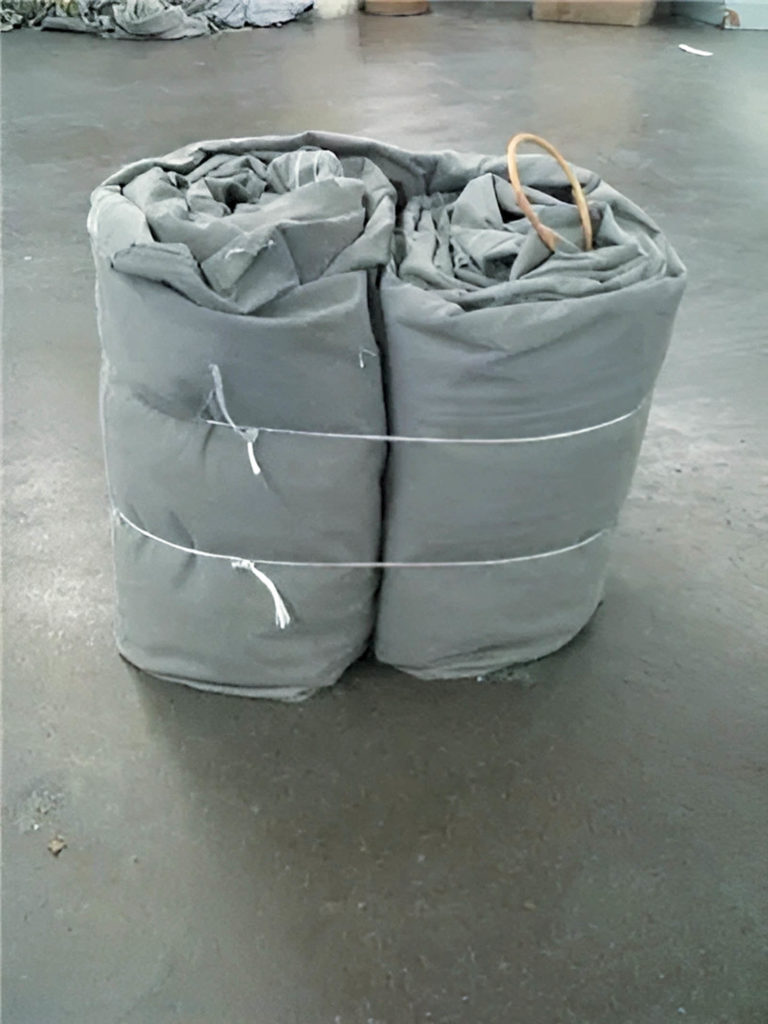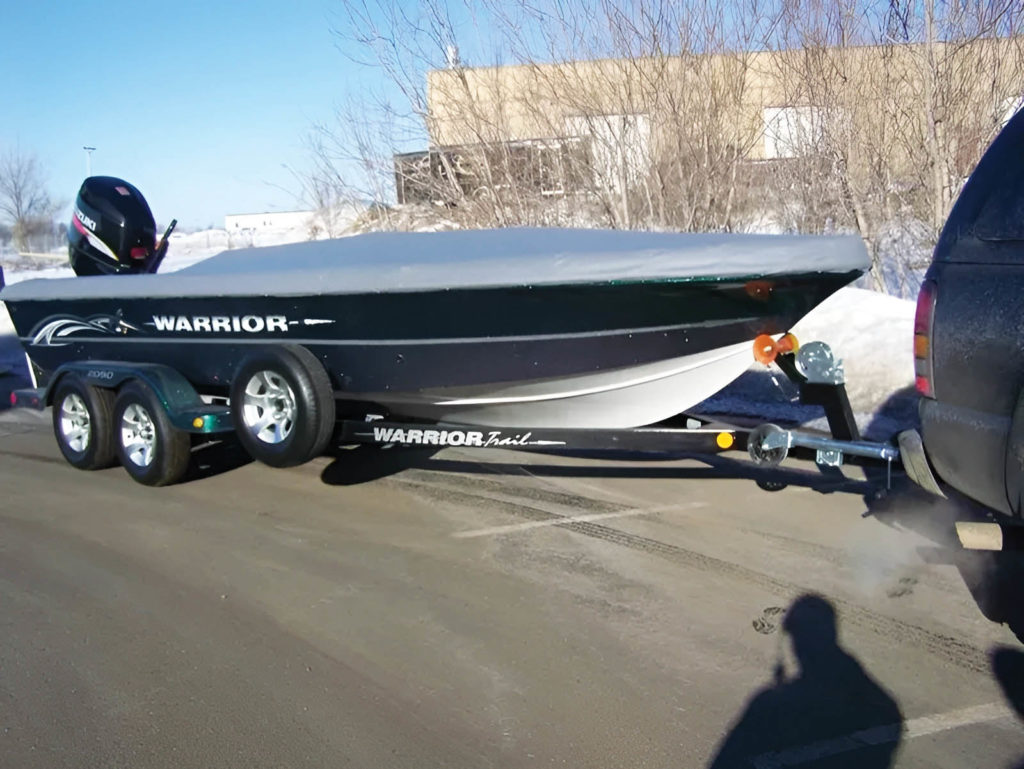
Although much of the country experienced a heat wave this summer, just as sure as morning follows night, cold weather has arrived.
In the Northeast and Midwest, thousands of boat owners are getting their boats ready for the winter months. They’re protecting them with various coverings, such as custom-fitted canvas, tie-downs, shrink wrap and even inexpensive tarps. But fabricators say there are advantages and disadvantages to each, and choosing the wrong one can not only be a waste of money but can potentially ruin a boat.

It’s a wrap
Many customers think shrink-wrapping a boat for winter storage is the most cost-effective option, and for some it is. A shrink-wrapped boat is completely waterproof when applied properly, and the wrap can be custom fitted to any boat.
But shrink wrap has its downsides too. For one thing, once a boat is wrapped, the customer has limited access to the interior until the wrap is removed.
More importantly, shrink wrap is not breathable. The boat must be completely dry before it can be wrapped, particularly if the boat is used on a lake. Because freshwater expands in volume when it freezes, any remaining water can expand and cause fiberglass to crack, lead to engine damage and more.
While tie-down tarps are comparatively inexpensive, Mark Hood, owner of Hood Canvas, in Merrimac, Mass., says people often install them incorrectly. “They tie them off to jack stands, and if the wind catches a cover and lifts it, it can lay your boat right over on the side. The wind can yank those jack stands right out from under the boat. They can’t be tied off to anything that supports the boat. That’s a known fact, and I’ve seen it happen quite a bit. I’ve seen real disasters at boatyards because people used to do that. Now boatyards want to be in control and won’t allow that. They like to shrink wrap the boat because ultimately they don’t want an upset customer just because he did a stupid thing.”
But Hood is not much of a fan of shrink wrap.
“In my opinion, shrink wrap is perhaps the worst thing you can do to a boat. But it’s convenient, and that’s the trade-off,” says Hood, who says he’s seen the good and the bad when it comes to covering boats. “There are a million different opinions on what’s best, and I’ve seen it all, from blue tarp covers to canvas.”
“Shrink wrap can be good if it’s properly ventilated and everything, but you’re much better off with a cover that can breathe.”
Hood prefers to use canvas covers. “In my opinion, Sunforger® is probably the best cover you can have because it’s got some weight and substance to it. When you put it on the boat, it doesn’t move around as much with the wind.”
The downside to canvas, he says, is that because it is made from cotton, it can be susceptible to water and sun damage. “If you take care of it properly, a canvas cover will probably last 18 to 20 years. If you don’t store it in a really dry area, it will rot quickly.”

Cost
“Some people only look at the initial out-of-pocket costs, instead of looking at the long-term effects of buying a proper cover,” Hood says. “But I think it comes down more to convenience than anything else. The boatyard will shrink wrap the boat and it’ll be tight. Snow and ice will slide off of it and the owner can forget about it and go skiing.”
What first-time boat owners often don’t consider is that shrink wrap is a recurring cost, says Fred Fisher of Fisher Boat Covers, in Burlington, N.J. Fisher’s father started the business in 1962. “We’ve always been in the boat cover business per se, making the tops and the side curtains and all that other fun stuff.” His business extends from Mystic, Conn., to Annapolis, Md., and he’ll travel north at least once a month to measure boats for canvas covers.
He often finds he has to explain to customers the comparative cost of shrink wrap to a more substantial product like canvas.
“Typically, about three years’ worth of shrink wrap will buy you a boat cover that lasts a lot longer than three or four years,” Fisher says. Fisher Boat Covers are custom fit. “We’re covering boats down to the water line. It has always been just a matter of tying it down. We draw rope in the webbing loops to tie securely underneath, and that’s what gives them a proper fit.”
An investment
The most significant benefit of a canvas cover is that it is reusable. A one-time investment in a good cover means it can be used season after season to protect against all marine elements, including sun damage from UV rays. Once it is properly fitted to a boat, it can be quickly and easily installed by the boat owner—no professionals are needed.
Jeff Erichsen, owner of Top Gun Boat Covers in Shakopee, Minn., says he often has to explain to potential customers how a properly made and fitted cover is a wise investment.
“I had a family come by my booth at a show once,” Erichsen says. “Mom, dad and a few kids. At the time I could do an 18-foot boat for $480, installed. Other dealers were charging $900 for that same cover. But even that is a lot for some people. So, we start talking, and the husband says, ‘Well, I think I’m just going to buy another tie-down cover because that worked last year.’ Then the wife says, ‘We’ve got three of those in the garage right now because you rip one every year. Now that’s $600 gone and we still don’t have a car.’’
As it did for Hood and Fisher, experience taught Erichsen what works best and what doesn’t.
“When I was starting in the business working for a dealer, I was doing whatever the dealer told me to do,” he says. “What he thought was best was a two-piece bow and cockpit cover, mainly because of the weight. After about 75 boats, people were coming over to me and telling me about a lot of the problems they were having. With two-piece covers, the water pours right in between the two covers. If you do one where you connect the cockpit cover and the bow cover together, when you go down the highway, the cockpit cover will pull the bow cover up and it will start to damage the boat. So when I started my business, I decided I would not make a two-piece cover. I operate differently from the other canvas shops. I’m probably one of the only shops in the whole United States that just does that one cover. I don’t do tie-down covers. I don’t do two-piece. I don’t do any of the enclosures that the other companies do. I just make that one type of cover, but it seems to be the one that keeps us going.”
Erichsen prides himself on custom work and measures everything by hand, several times. He says he often gets requests from people who have seen his work. “I get calls all across the United States and Canada. I’ve had them from Egypt and the U.K. They want my covers. They see a boat cover that I’ve done on my website and they say, ‘Send me that cover, or send me that pattern.’ But here’s the problem: I found that when I first did the brand-new boats, I would measure the windshields. I’d measure the width and length. The design will vary by two or three inches from older models in width, length, height of the windshield position—all sorts of things. There was no way you could make a pattern cover and send it out to somebody and have it fit. That’s the whole reason. So everything has to be custom.”
Tim Goral is senior editor of Specialty Fabrics Review.
 TEXTILES.ORG
TEXTILES.ORG


